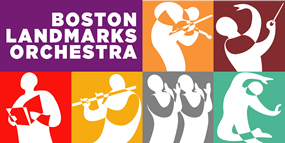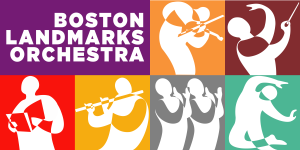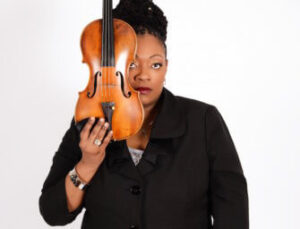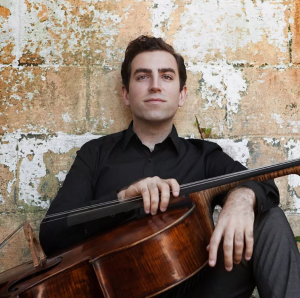I came to discover what young Americans have in them and to help them express it…
The new American school of music must strike its roots deeply into its own soil.
Antonín Dvořák in 1892
explaining his purpose as Director of the National Conservatory in New York
Leonard Bernstein was the most influential American musician of his time—perhaps of all time. Gershwin and Ellington were at least as talented, but no one had “Lenny’s” charisma. America’s hippest composer, it turned out, was also a damn good conductor; and then one of the greatest innovators in Broadway history morphed into an astonishingly gifted music educator. Audiences were spellbound. For the first time, symphonic music was cool—because Bernstein made it so.
He leapt into the limelight in November of 1943—at the age of twenty-five—when he substituted on short notice for conductor Bruno Walter at the New York Philharmonic. Two months later, he conducted the first performance of his Symphony No 1 Jeremiah with the Pittsburgh Symphony. Three months after that—in April 1944—his ballet Fancy Free opened at the old Metropolitan Opera House, with scenario and choreography by Jerome Robbins.
Immediately, Bernstein and Robbins got to work adapting Fancy Free into a full-length musical. The basic storyline was the same—three sailors on leave in New York City, looking for girls—but they invented new plot lines and developed the characters more fully. Bernstein wrote fresh music for all of it. “There was not a note of Fancy Free music in On the Town, Bernstein said. “We started from Square One with a totally new series of conceptions, different plot ideas, different scenarios…”
When it opened on Broadway on December 28, 1944, On the Town introduced a new kind of urban swagger to the Broadway stage. The creative team hired a mixed-race cast, representing interracial couples on stage touching and holding hands, a first for Broadway. Later in the run, the push to broaden racial representation extended to the orchestra as well, including the hiring of Everett Lee, who became the first Black conductor of a mainstream Broadway show. The same team made interracial relationships a central theme of their later creation, West Side Story.
Gene Kelly attended the opening of On the Town. “I loved it so much I phoned Hollywood that evening,” he wrote. By 1949, On the Town had become a much-loved film, starring Kelly and Frank Sinatra. In the transition from stage to film, much of Bernstein’s score was cut. Surprisingly, what was not cut was some of the more modernistic music that gave the score its bite—what stage director George Abbott referred to as “that Prokofiev stuff.”
Bernstein’s 1946 suite of three dances from the musical begins with some of “that Prokofiev stuff”: punched dissonant chords launching the opening sequence of dance rhythms. The music comes from a scene in which the sailor Gabey falls asleep on the subway, dreaming that meets the winner of the New York City subway’s beauty pageant, Miss Turnstiles, and sweeps her off her feet. The second movement is a full-orchestra setting of “Lonely Town,” in which one of the sailors meets a young girl in Central Park:
Unless There’s Love
The World’s an Empty Place
And Every Town’s
A Lonely Town
The third is from the finale of Act I, in which the entire ensemble hits the bars in Times Square. It features the best-known song from the show, “New York, New York,” a high-energy, brash, jazz-infused love song to the Big Apple:
New York, New York, a helluva town.
The Bronx is up, but the Battery’s down.
The people ride in a hole in the groun’.
New York, New York, it’s a helluva town!
George Whitefield Chadwick had an outsized influence on American music from the turn of the twentieth century through the years of World War I. He served as President of the New England Conservatory from 1897–1930, where he elevated performance standards, brought new rigor to the curriculum, and invited members of the Boston Symphony to join the faculty. His students included some of the most prominent American composers of the twentieth century, including two whose works the Landmarks Orchestra has performed regularly: Florence Price and William Grant Still. As a teacher, Chadwick had a reputation for being demanding, but also fair-minded and immensely affable. “Chadwick was no Boston stuffed shirt” writes cultural historian Joseph Horowitz. “His métier was merriment.”
The Scherzo from his Second Symphony revels in what Horowitz describes as Chadwick’s “sunshine mode… a plausible point of reference is Winslow Homer’s poetic boyhood romps.” Its key and character might remind listeners of the scherzo from Mendelssohn’s Scottish Symphony, but the ebullience is purely American. The instrumentation for the scherzo is slightly reduced compared to the other movements of this symphony—no trombones and two horns rather than four—in a nod to the early Romantic precedents of Mendelssohn and Schumann.
Coincidentally or not, the rhythm in the opening bars—three rapid notes with the beat falling on the second—is the same rhythm William Dawson employs in the first movement of his Negro Folk Symphony, where it represents hand clapping and foot stomping. While Chadwick’s inheritance is Bostonian Scotch-Irish rather than African American, in both cases the rhythm and exuberance are unmistakably American. Chadwick’s elegant handling of musical architecture and his masterful orchestrations were models for generations of American composers. His best works should be staples of the repertoire, but at present are the farthest thing from it.
Two years after Gene Kelly starred in and direction the film adaptation of Leonard Bernstein’s On the Town, he again starred in the 1951 film, An American in Paris, directed by Vencente Minnelli. At the climax of the film, Kelly created choreography for the entire 17 minutes of. In fact, Gershwin had repeatedly referred to his work as a “rhapsodic ballet.”
George Gershwin created the opening theme for his An American in Paris as early as 1926, when he wrote it on a thank-you card to friends he was visiting in Paris. Two years later, he was playing around with the theme on his piano in his apartment on 316 West 103rd Street, when he hit upon an idea. He was keen on developing the material in a “French” way, as Debussy or Milhaud might. The problem was how to build a larger structure for his tone poem. He later recalled what came to him as he stared out the widow toward the Hudson:
I love that river and I thought how often I had been homesick for the sight of it, and then the idea struck me—an American in Paris, homesickness, the blues…. I thought of a walk on the Champs Elysées, of the honking taxi, of passing a building which I believed was a church… There are episodes on the Left Bank, and then come the blues—thinking of home, perhaps the Hudson. There is a meeting with a friend, and after a second fit of blues, a decision that in Paris one may as well do as the Parisians do.
The idea of portraying taxi horns became the most famous feature of his new work. Arriving in Paris later that spring, his host took him shopping aty the various shops that sold equipment for motor cars. He ended up with quite a collection. The duo-pianists Jacques Fray and Mario Braggiotti recalled seeing “about twenty” taxi horns sitting on the piano in his Paris hotel room. Ultimately George selected four to use in his music, but exactly which four they were matters, because taxi horns generally sound a specific pitch. Getting those pitches right seems important. And until Mark Clague, editor-in-chief of the new Gershwin critical edition had done his research, it had been assumed that the pitches were: A, B, C, and D. Clague came to realize that those were likely designations of particular horns as Gershwin had labeled them. He might as well have called them: 1, 2, 3, and 4. Based on the premiere recording, which Gershwin oversaw (and played keyboard on) in 1929, the pitches were actually: A-flat, B-flat, D, and a low A. We perform the correct pitches tonight, and gratefully acknowledge the generosity of the University of Michigan and Jonathan D. Smith, DMA, Percussion Program Manager for making their specially-created taxi horns available to us.
In 1934, Gershwin organized a radio show of his own music in order to fund his plans to create and produce Porgy and Bess. On December 9, 1934, he performed excerpts from An American in Pairs with a studio orchestra, and gave a succinct description of the work’s narrative:
It describes an American’s visit to the gay and beautiful city of Paris. We see him sauntering down the Champs Elysées, walking stick in hand, tilted straw hat, drinking in the sights, and other things as well. We see the effect of the French wine, which makes him homesick for America. And that’s where the blues begin. He finally emerges from his stupor to realize once again that he is in the gay city of Paree, listening to the taxi horns, the noise of the boulevards, and the music of the can-can, thinking, “Home is swell! But after all, this is Paris—so let’s go!”
Antonín Dvořák’s music grows from his native soil, as much as any composer’s. And yet, as the international fame of this revered Czech composer grew, he became increasingly interested in the development of new music in other lands. His two-plus years living in New York and Iowa yielded some of his greatest and best-loved music, including the “New World” symphony; the “American” string quartet; the E-flat major string quintet, the American Suite; and the Cello Concerto. Yet, despite his exploration of musical sources native to this continent—especially his awareness of the Negro Spiritual tradition through Harry T. Burleigh’s influence, and his interest in Native American subjects and music—the cello concerto is rarely considered anything other than quintessentially Czech.
There are American aspects of the Cello Concerto to be sure. The work might never have come into being had Dvořák not heard the Irish-American cellist-composer Victor Herbert perform his own Second Cello Concerto. And as discerning a musician as the cellist Lynn Harrell has noted, “I have visited the house in New York where he wrote the Cello Concerto. To me, it is American in that it reflects a Bohemian’s immersion in the American experience… It’s homesickness and love, but overall tinged with the success and he had in America.”
Nonetheless, key characteristics of the work tie it directly to Dvořák’s homeland. First, it was written for, and at the request of, the great Czech cellist Hanus Wihan; the work is dedicated to him. Second, the work was written toward the conclusion of Dvořák’s stay in New York, and so it makes sense that the work glances homeward. Finally, there was a personal loss that meant a great deal to the composer, and that in the end, colored crucial portions of the work.
The first movement opens with a minor mode march, a darkly eloquent theme that circles back on itself twice. It is a potent idea that Dvořák richly mines. The second theme is among the most lovely of all Dvořák creations. It is introduced first by the solo horn, where its nobility is mixed with intimacy. When the cello enters, it is on top of a surprise major chord in the trombones, transforming the first theme now into the major mode, and a more heroic attitude. When the cello plays the second theme, it too takes on a new color, one of sadness and melancholy. The whole of the movement is filled with felicitous choices in melodic invention and tone coloration, especially in the many exchanges between soloist and the winds.
The final two movements are among the most personal he ever composed. They sing of deeply personal experience, and of family loss. There is no finer or more succinct description of the music and its subject than Michael Steinberg’s:
The adagio begins in tranquility, but this mood is soon broken by an orchestral outburst that introduces a quotation from one of Dvořák’s own songs, sung by cello in its high register and with tearing intensity. The song, the first of a set of Four Songs, Opus 82, composed in 1887-1888, is Kéž duch můj sám (Leave me alone). It was a special favorite of Dvořák’s sister-in-law, Josefina Kaunitzová. Thirty years earlier, Dvořák had been deeply in love with the then sixteen-year-old Josefina Čermáková, an aspiring actress to whom he gave piano lessons. The love was not returned, and Dvořák eventually married Josefina’s younger sister Anna. Something of the old feeling remained, and the song intruded on the Concerto when the news of Josefina’s illness reached Dvořák in New York. Josefina died 27 May 1895, a month after the Dvořák’s return to Prague, and it was in her memory that Dvořák added the coda—elegiac and agonized—to which he did not want Wihan to add his cadenza. Here is how Dvořák described this passage: “The Finale closes gradually diminuendo, like a sigh, with the reminiscences of the first and second movements—the solo dies down to pp, then swells again, and the last bars are taken up by the orchestra and the whole concludes in a stormy mood. That is my idea, and I cannot depart from it.”
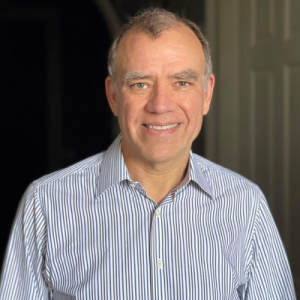 CHRISTOPHER WILKINS was appointed Music Director of the Boston Landmarks Orchestra in the spring of 2011. Since then, he has expanded the orchestra’s mission of making great music accessible to the whole community. He has also helped develop the orchestra’s Breaking Down Barriers initiative, making accessibility a priority in all aspects of the orchestra’s activities.
CHRISTOPHER WILKINS was appointed Music Director of the Boston Landmarks Orchestra in the spring of 2011. Since then, he has expanded the orchestra’s mission of making great music accessible to the whole community. He has also helped develop the orchestra’s Breaking Down Barriers initiative, making accessibility a priority in all aspects of the orchestra’s activities.